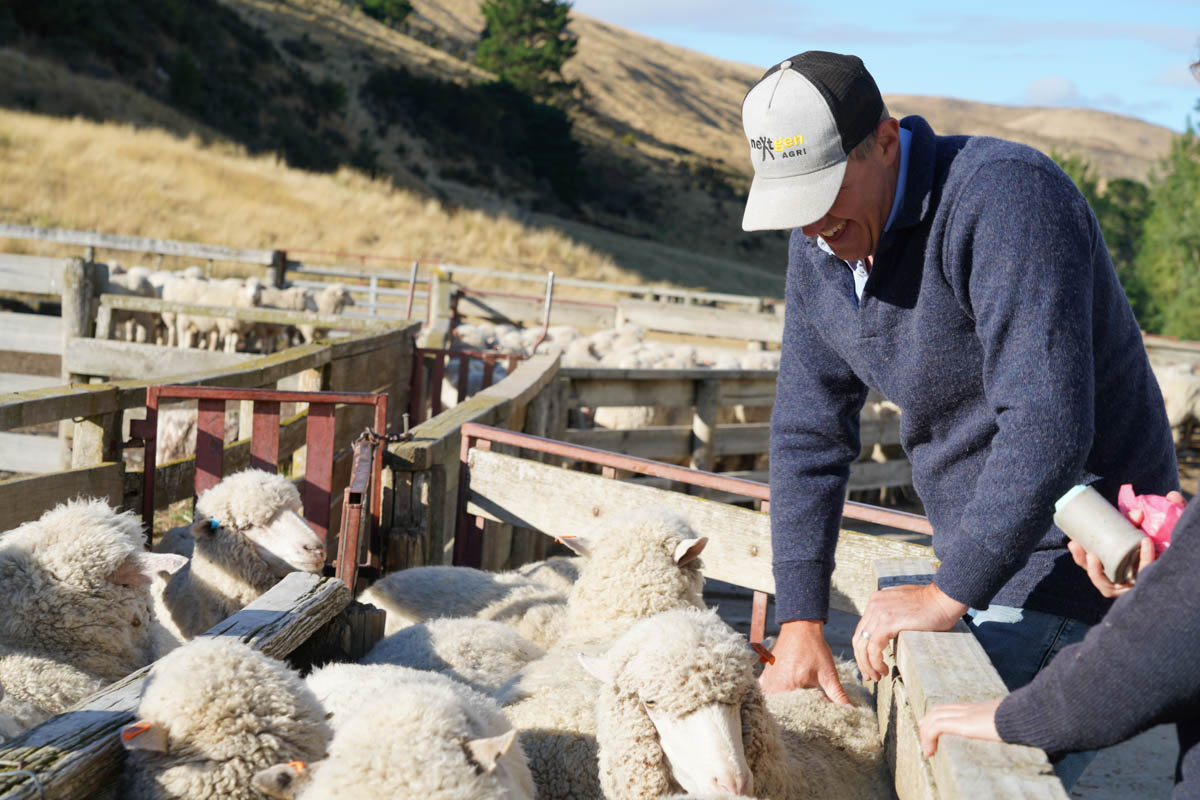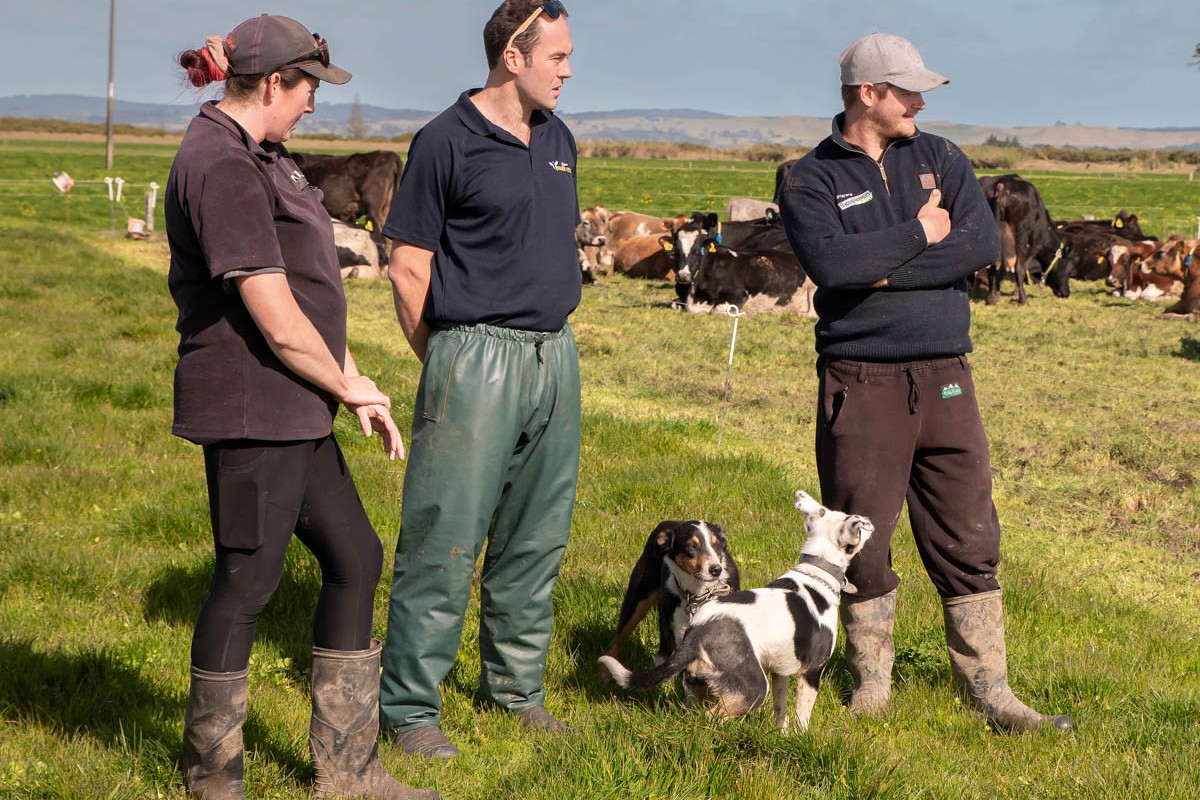In search of the perfect sheep
The New Zealand sheep industry has had many discussions over the years about the perfect sheep and how that fits into the diverse range of farming conditions. There is no one-size-fits-all solution, but a group of farmers and a scientist are working on that idea. By Sarah Horrocks.

In 2013, the New Zealand Merino Company (NZM) was searching for fine wool to fill a lucrative 23–25 micron Smartwool contract. In an ideal world, the answer would be to farm more fine wool sheep to meet demand. However, the limitations of Merinos, driven primarily by their intolerance to the bacterial disease footrot, meant they were better suited to certain geographic and environmental conditions where footrot was less prevalent.
But what if a new fine wool sheep type could be bred to target NZM’s fine wool fibre and meat contracts while being an easier-care alternative to traditional fine-wool sheep types?
This was the premise of the NZ Sheep Industry Transformation Project (NZSTX), a seven-year Primary Growth Partnership between NZM and the Ministry for Primary Industries, aimed at increasing the production of fit-for-market sheep, supporting finer wool production, and using product differentiation to improve grower returns.

NZM approached Australian geneticist Dr Mark Ferguson to lead its production science team. He’d just completed his PhD in Merino genetics and was lecturing in animal science at the time.
Ferguson was convinced he could create a new fine-wool sheep genotype with an improved carcase, high reproduction rates and vastly improved animal health.
“In short we wanted to breed a Romney with fine wool,” Ferguson said.
The idea was pitched to fine wool sheep breeders across the South Island. Seven of them joined the project and a nucleus flock of fine wool breeds from four breeders was established.
The first artificial insemination mating was underway by April 2013. Lambs from this mating were all farmed as one ‘contemporary’ group (meaning they were run in mixed-breed groups with peers, and not in A or B mobs) at Stonyhurst in North Canterbury.
As a science-based industry project, there was no breed society to enforce rules, meaning it was relatively simple to follow Ferguson’s 10-year breeding objective for what the 2023-born progeny would look like.
“Getting rid of footrot was probably 1, 2 and 3 on that list,” Ferguson mused. He said if they wanted to take fine wool sheep out of the Southern Alps, they had to get them resistant to footrot.
Ferguson and his team set about creating a tool to predict resistance in the animals. Initially they considered a DNA-based genomics test, but realised this was a long and arduous road. They instead decided on a quantitative trait, setting up a progeny test that has now hosted more than 300 fine wool rams from across the South Island and Australia.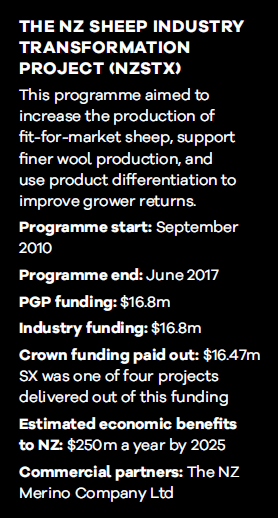
The progeny of these rams were managed together on host farms around the South Island. They were foot-scored (where all four feet are scored on a six-point scale from 0–5 during an active footrot challenge) and this data, along with pedigree and other information was collated by scientists in Australia to provide the basis of a breeding value.
Ferguson and his team began a similar process working on farm with ram breeders and the SX group. Data from these properties was combined with the progeny test data and developed by Sheep Genetics in Australia into the estimated breeding value (EBV) for susceptibility to footrot (FR), describing a sheep’s susceptibility to footrot and measuring how well a sheep retains foot health under a challenge with virulent footrot.
With this came the capability to improve the SX flock’s footrot resistance as fast as the reproductive cycle would allow. Other breeding objectives for the nucleus flock were a 22–23 micron moderate-weight fleece, internal parasite resistance, and ewes weaning 130–135% lambs that would kill at 20kg CW by seven months of age.
Early matings involved merging genes from sheep with strong meat attributes with those of sheep with excellent fine wool attributes. Available fleece combined with the fertility and growth rates of a crossbred meant the earning potential of an SX Fine Wool sheep could be higher than a crossbred.
“In recent years we’ve also put emphasis on dag score and worm resistance and we’ve now got the highest footrot resistance in the fine wool industry,” Ferguson said.
When making a direct comparison back to the Merino, he said the SX programme never set out to replace the fine wool Merino. Instead, it was developed to produce a fine wool fleece in areas of NZ where farming a Merino would be marginal.
Ferguson is pragmatic when looking at the SX breed in relation to Romney.
“I don’t think we can say they’re a fine wool Romney just yet.”
They’re slowly catching up on the crossbred performance and he’s certain they’ll be competitive in coming years. SX rams going into North Island hill country are reportedly performing well and not having issues with footrot.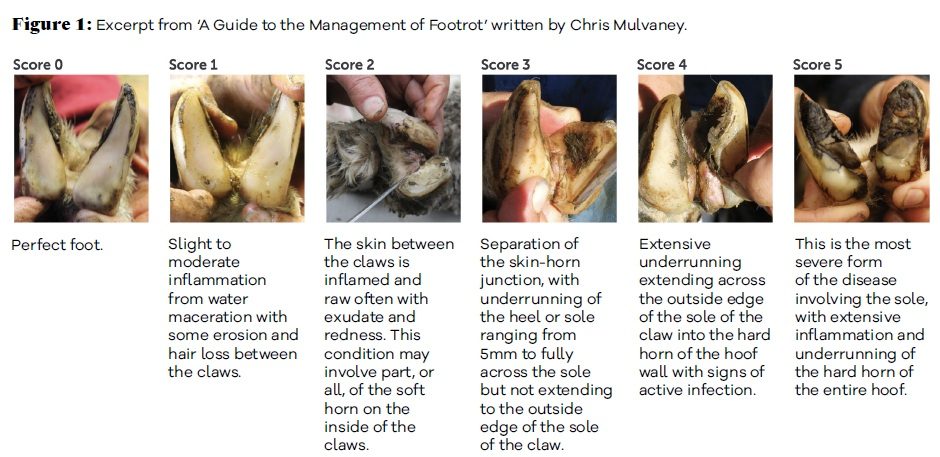
In future, the group plans to refine the breed and squeeze every trait possible – lamb survival rate, tidying up the wool to fit into lower micron apparel contracts and improving growth traits.
Testing work is underway in the facial eczema space and Ferguson hopes they may be able to create tolerance to enhance their appeal in the North Island.
“Initial trials indicate the SX may already be more tolerant than the average sheep.”
Most of the new genetics come from within the group, with Ferguson having harvested everything he can from Australia and New Zealand.
“We have come through with a couple of industry-leading rock stars who are trait leaders for footrot as well as other traits – Cleardale 171230, sired by a ram from the nucleus and SX 180141, who was bred in the nucleus flock.”
Both rams have made an impact with Cleardale 171230 recently selected for the Beef and Lamb Central Progeny Test. The results will show his worth compared to all animals on the SIL (Sheep Improvement Ltd) database, providing a great opportunity to benchmark the SX breed against tried and tested Kiwi breeds and make informed decisions.
The nucleus flock is 300–500 ewes, depending on culling rates. At the conclusion of the NZSTX project in 2017, the six remaining breeders in the group – Cleardale, Melrose, Stonyhurst, Matakanui, Ida Valley and Earnscleugh – have funded the SX programme. These breeders take their genetics from the nucleus flock and then sell the progeny into commercial industry through ram sales. Farming ultimately comes down to profitability for everyone involved and ten years on, the SX Fine Wool breed is edging closer to becoming that perfect sheep.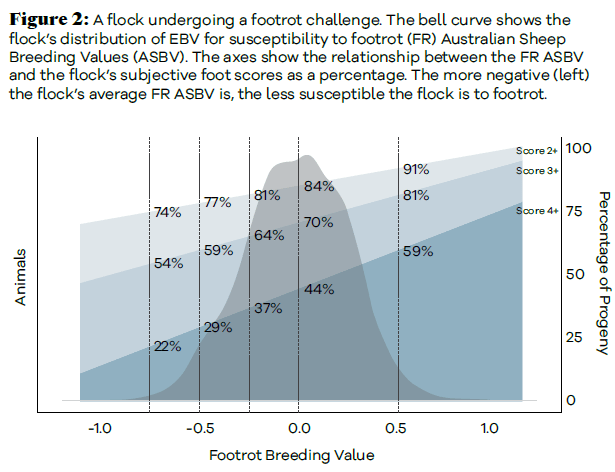
The gene pool
Ben Todhunter at Cleardale Station says his shift in the SX Fine Wool direction was an obvious decision, commercially for wool and meat production, and to remove the burden of footrot.
“We put ewes and rams into the nucleus flock and mirrored the programme here with our own sheep.”
Todhunter traditionally ran Merino, English Leicester and a halfbred (English Leicester x Merino) on Cleardale, which were heavily used in the SX programme. He now also runs an SX Fine Wool flock and started selling the rams in 2018 by private treaty. He’s hosted two on-farm sales, with the third due in January 2024.
“In 2022 we sold 80 rams at about $2500 a head and then in 2023 we sold 100 at $2000 a head.”
The rams are sold to a wide range of clients, from crossbred farmers wanting to bring their wool finer, to fine wool farmers wanting to add growth and muscle.
“The big thing is maintaining your reproduction at the same time and getting rid of footrot.”
As deputy chairman at NZM, Todhunter said recent markets have seen some unsteady shifts in the demand for certain micron fine wool.
“Smartwool’s growth is now in the apparel space so I think the SX wool will need to come a bit finer to fit that market.”
As far as the meat industry goes, the SX lambs slip into Alliance’s Silere programme, being at least 50% Merino.
“Typically you’d kill a Merino as a hogget rather than at weaning.”
Todhunter says Merino lambs are generally run through the winter, shear a valuable 3–4kg fine wool fleece in the spring and are then killed when there’s not a big supply of lamb around.
“There’s space in the market to fetch a premium for them at that time.”
Cleardale has been finishing their homebred SX Fine Wool lambs and the results are proving their worth. Todhunter said they grow faster so after taking them through to April, they can shear 2.5–3kg of 85mm staple length fleece and then kill them out at 21–23kg before that first winter.
“The SX wool tends to grow faster than the Merino, so the staple is longer and reaches a combing length of 75mm earlier.”
Cleardale’s sheep are run in ‘contemporary’ mobs, meaning all breeds are mixed together so they can be accurately compared when measurements are taken – eye muscle scanning, fleece weights and samples, individual faecal egg counts and body weights.
Commercial gains
Mark Wragg was a strong wool Romney farmer until four years ago. He was always keen to get into fine wool sheep but was nervous due to their traditionally low muscle mass and tendency to get footrot. It wasn’t until he went with his father and business partner Ken Wragg to an NZM event showcasing the SX Fine Wool programme that he changed his view.
The Wragg’s 1400ha farm Steventon is in Whitecliffs, Canterbury. It’s predominantly extensive hill country but there is 200ha of intensive heavy clay downs country which doesn’t suit a traditional fine wool sheep.
“It’s pretty hard on feet when they’re down in the paddocks.”
He was also determined to maintain production through lambing rates and weaning weights. The SX Fine Wool breed supposedly solved all these problems.
Steventon runs 4000 ewes and 1200 replacements, with about two-thirds of the total going to an SX ram. Since the first mating in 2019, they’ve seen quite a big variation in both the wool and lamb size when they’re coming out of a Romney ewe, but Wragg puts that down to what he calls, “first-cross syndrome”.
Weaning weights have remained consistent with when Wragg ran straight Romneys, and he feels that if anything, they’ve climbed a bit. There are also fewer bottom-end lambs than he saw coming out of the Romneys.
“We weaned all the second cross lambs together last year and they were a nice even line.”
The growth rates at Steventon, which are measured with EID tags, haven’t dropped since shifting from Romneys, and Wragg credits the breeding value for footrot with taking care of that problem.
“I haven’t seen a sheep come through with footrot yet.”
The wool is improving year on year with the second and third crosses. Wragg said he’s still got first-cross lambs coming out of the Romney ewes and then has first-cross two-tooths, as well as first- and second-cross hoggets mated to SX rams.
Once the full clip drops down under 25 micron Wragg expects to see a big lift in his wool cheque. In the first year of the transition, it was a good season so he could hang onto the lambs and shear 4000 first-cross lambs.
“Even in that first year, they went from $2.50 Romney lambswool to almost $10 a kilo for the first-cross lambswool with NZM.”
As yearlings, the first-cross hoggets had dropped to 26 micron and the finer end of the ewes is now under 25 micron.
Seeing what data can do and the amount of progress made with recording is something that gets Wragg excited, and he’s looking forward to getting his full ewe clip under 25 micron, while holding onto good scanning and weaning rates.
Wragg said last year was a terrible year for trying to grow lambs, with only 30% of the halfbred lambs up to weight for mating. They’re all weighed off at 40kg the day the ram goes out and Wragg hopes this will be more like an 80% hit rate this year.
“Last year was just a particularly bad year for lambs, with a wet and cold spring.”
Landcorp backing
Landcorp Farming Ltd (Pamu), has been monitoring work done by the SX Fine Wool breeder group for several years. NZM pointed Landcorp and its subsidiary Focus Genetics in the direction of the work the SX breeders were undertaking, having demand for more wool in the 21–25 micron space.
Landcorp has been mating about 50 SX Fine Wool rams to a few thousand Romney ewes on one of its Otago farms, which are now coming into their third mating. However, when approached for contribution to this article, Landcorp was not forthcoming with the details and results of its programme.
The farms are not in traditional fine wool country, but Landcorp did say they were confident in the science behind the estimated breeding value that says they won’t have problems with footrot. Landcorp went on to say the data is all there to tell you how they’re going to perform and they’re pleased with the two lamb drops so far.

